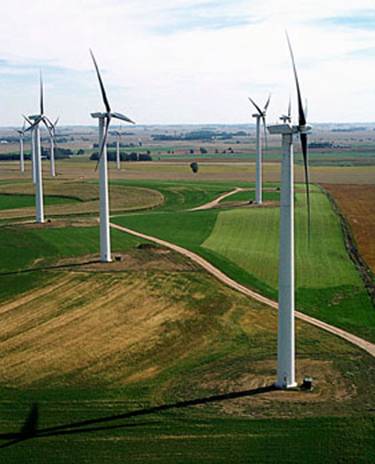
According the American Wind Energy Association (AWEA), the national trade association of over 2,500 companies, the industry added “just 395 megawatts (MW) of wind-powered electric generating capacity in the third quarter of 2010, making it the lowest quarter since 2007. Year-to-date installations stood at 1,634 MW, down 72 percent versus 2009, and the lowest level since 2006.â€
In Europe projects are going at twice the speed and in China expansion is three times faster. “We’re increasing our dependence on fossil fuels, impacting our national security, instead of diversifying our portfolio to include more renewables,” said AWEA’s CEO, Denise Bode.
Policies
The organization blames a lack of long-term energy policies such as the ones already in place in China and Europe for the slowing of the industry. Bode says the industry could get revive with the passage of a Renewable Electricity Standard and add power generation faster than any other source of electricity.
Last year, short-term action to extend tax credits for renewable energy in 2009 helped boost the U.S. wind industry to historic job growth and a high of 10,010 MW in new capacity, AWEA says.
The irony is that wind is becoming cheaper from a cost and technical point of view. Bode says up-front costs are decreasing, technology performs better and there is more certainty of a long-term stable price. Besides, it is not subject to environmental regulations on pollutants and water use, for example.
Still, while coal’s new installed capacity was 30 per cent, wind accounted for 14 per cent. In 2009, the situation was exactly the opposite, with wind accounting for 39 per cent and coal, 13 per cent.
Prospects
“U.S. wind energy can again lead the world,” Bode said, “but if federal policymakers do not act quickly to provide investment certainty through a Renewable Electricity Standard, and longer-term tax policy like our energy generation competitors enjoy, the U.S. wind industry will stall out.”
She adds that continued tax credits and a federal benchmark of 15 per cent renewable in national electricity matrix by 2020 would be the best ways to consolidate the industry again.
AWEA says that 14 American states have more than 1,000 of wind power capacity installed, and in 37 states there is some utility-scale wind. Oregon added the highest amount of wind capacity in the third quarter while Indiana has moved into the top ten wind power states with 111 MW installed in the third quarter.
The wind industry is ready and willing, according to Steve Lockard, CEO of TPI Composites. “U.S. wind energy has tens of thousands of workers and wind farm sites ready to go,” he said. “It’s a good investment opportunity for Congress and the states, to create manufacturing jobs across the country.”






hmmm thats funny since this whole year we’ve been having some pretty hardcore weather conditions and events such as earthquakes, tsunamis, deadly waves of heat etc.
I noticed that we did not have much wind most of the time but on when we had storms, holy crap!